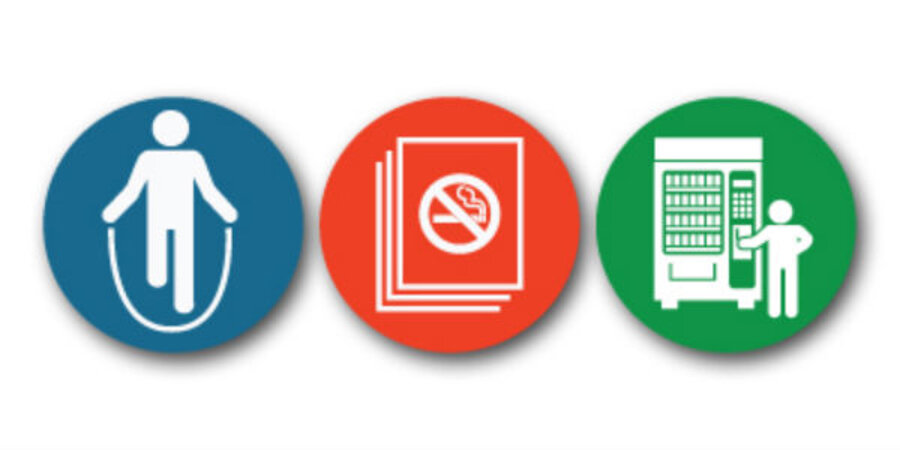CDC Report: US schools show progress in fostering healthy habits
Loading...
| Boston
Between the classroom, the cafeteria, and the playground, American children spend at least one third of their day at school. In recent years, many schools have recognized their role in helping students to form healthy habits and have implemented policies to promote healthier choices around food, exercise, and tobacco use. The efforts seem to be paying off, at least in terms of setting the stage for a healthier school environment, concludes a new survey of school health policies and practices by the Centers for Disease Control and Prevention (CDC).
“There is really great news for schools across the country here,” Wayne Giles, director of the CDC’s Division on Population Health said in an interview. “Between now and when this survey last occurred six years ago we have seen very dramatic improvements in terms of nutrition, opportunities for physical activity, and being free of tobacco smoke.”
The 2012 survey is the most recent in a series of such studies conducted by the CDC since the 1990s, this year’s results (for the calendar year 2012 and released Aug. 26) show continued progress in several areas – with marked improvement in nutritional offerings, physical fitness, and tobacco use. (This study did not address the actual impact of such polices on students' health.)
The 12,000 school districts surveyed have intensified efforts to emphasize the “nutrition” in nutritional services, including breakfast, lunch, after-school programs, school stores, and concessions stands, in part due to the 2010 Healthy, Hunger-Free Act of 2010, which issued new guidelines for school meal programs regulating portion size and nutritional offerings.
Three quarters of US schools are now extending nutritional guidelines to a la carte offerings as well, compared with just half of schools in 2006.
Dr. Giles hopes that parents will continue to put pressure on school systems to enhance nutrition: “Parents need to be asking about the availability of healthy food and healthy drinks. They need to be asking about access to free water.”
While the Healthy, Hunger-Free Act mandates access to clean, free, drinking water in response to the increased popularity of bottled water, this report did not explore how widespread those offerings actually are. Giles expects that this will be included in future surveys.
He added that parents might consider requesting that children have recess before lunch to help children work up an appetite and make sure that they are not sluggish on the playground after a meal.
Since 2000, schools have moved beyond red rover to take a more comprehensive role in children’s physical fitness.
Last year, nearly two thirds of schools administered fitness tests, more than double the number offering such tests in 2000, according to the report. Many schools have started sharing the results of these tests with parents.
Parental involvement is key to helping students translate the physical activities undertaken in school into lifelong habits, Giles said.
The percentage of schools that took intentional steps to encourage family involvement in physical activity nearly tripled in the past decade, from just 25 percent in 2000 to 65 percent in 2012, the survey found.
Additional programs geared toward reduction of tobacco use and violence prevention showed marked improvement as well.





